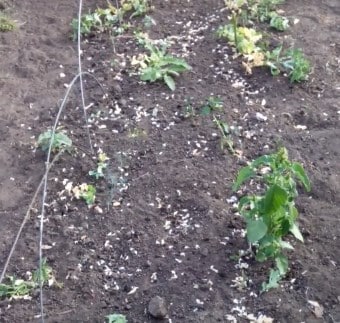Useful tips for gardeners: what can be planted after peas and why it is so important to change where to plant vegetables
During the times of Great Rus', peas were considered a symbol of harvest and prosperity in the house. There was even a special holiday - “Pea Day”. On this day, people in the villages picked peas, went to their neighbors and treated each other with congratulations, and after the holiday the pea fields were empty.
And even then, people were thinking about observing crop rotation: what to plant after the peas next year, what crops could grow productively on the land where the peas grew? Let's look into this too.
Why alternate crops?
All plants take nutrients from the soil, each with its own. If one crop is planted in one place for a long time, the land will be depleted. In addition, growing in a garden bed for several years in a row, plants may suffer from the same types of diseases and risk being eaten by the same pests.
Rotating crops at the planting site allows you to maintain soil fertility (and even replenish it).
Crop rotation rules
Crop rotation is a scientifically based change of crops and fallows over time and across territories (pairs are areas where nothing is planted, free from crops).
The full cycle of changing plants in crop rotation can last from 4 to 10 years.
Important! The basic rule of crop rotation is to alternate crops belonging to different families in the beds. For example, one year, nightshades (tomatoes, potatoes, peppers) grow on the plot, then cruciferous vegetables (radishes, cabbage), then legumes (beans, peas), etc.
You can use another principle of changing cultures.It is based on their classification according to the part of the plant consumed as food. Remember, in a children's fairy tale there were “tops” and “roots”? The “roots” include everything that ripens underground, and the “tops” include everything above the soil: tops, fruits and flowers. Then the alternation can be organized as follows: root, fruit, tops, flower. Or in another way: flower, tops, fruit, root.
For example, if last season carrots (“roots”) grew in the garden bed, then this season we plant tomatoes (fruit). Then we’ll change it to greens (tops) and lupine (flowers). But some gardeners do not grow flowers in beds, saving space. In this case, you can skip the flower year.
Peas in crop rotation
 Peas are considered the best natural supplier of nitrogen to the soil. While it grows, small nodules form on its roots, which accumulate atmospheric nitrogen. After peas, about 100 g remain on one square meter of land. Plants need mineral nitrogen for proper growth and development, and it also affects the duration of their flowering.
Peas are considered the best natural supplier of nitrogen to the soil. While it grows, small nodules form on its roots, which accumulate atmospheric nitrogen. After peas, about 100 g remain on one square meter of land. Plants need mineral nitrogen for proper growth and development, and it also affects the duration of their flowering.
Important! You cannot plant peas in a newly fertilized area - they will go into tops (there will be few pods).
You can grow peas in the garden from the middle of the calendar spring (from the second half of April). The planting deadline (for early ripening varieties) is until July 10.
With early sowing, the harvest is harvested from the end of June - beginning of July. By the end of August the bed will be free. And when planting peas late, the soil in the garden bed may “stand idle” until almost mid-summer. To make the most of the land, the garden bed can be used for other crops during free time from peas.
What is better to plant before and after peas in the garden?
| The best predecessors
(what to plant before) |
Top Followers
(what to plant after) |
|
Any crops (there are no crops for which peas will be a bad predecessor) |
Let's talk separately about bad predecessors of peas. They are considered all legumes (beans, soybeans, beans), including the peas themselves. This means that it is not worth growing peas in one place for several years in a row.
Attention! Peas are returned to the garden bed in crop rotation no earlier than after 5 years.
What can you plant next to peas in the garden? Experienced gardeners consider the best neighbors for peas to be:
- cucumbers;
- carrot;
- potato;
- radish;
- spices.
These cultures are favorable to each other and get along well in the same territory.
What to do after harvesting
Usually in August the tops of the legume plant begin to dry. With late sowing, this occurs in early autumn. After harvesting the last harvest, you need to take care of the soil and remember the wonderful property of the plant to accumulate nitrogen in the nodules. To prevent this wealth from going to waste, when harvesting tops from the garden bed, the roots of the plants should be left in the ground, cutting off only the above-ground part. The root will rot over time and release nitrogen to the soil.
Let's sum it up
Do you want to grow a rich harvest? Follow the rules of crop rotation - alternate crops in the beds. What can you plant after peas? Whatever the gardener wants. Peas are an excellent green manure. Due to the fact that the plant accumulates nitrogen nodules on its roots, it is considered the best predecessor for any agricultural crop. And it’s good to plant peas after all types of cabbage, tomatoes, potatoes and cucumbers.
Plant peas: they are easy to care for and also restore the fertility of the soil. The benefit is “two in one”: you will reap the harvest and enrich the land.